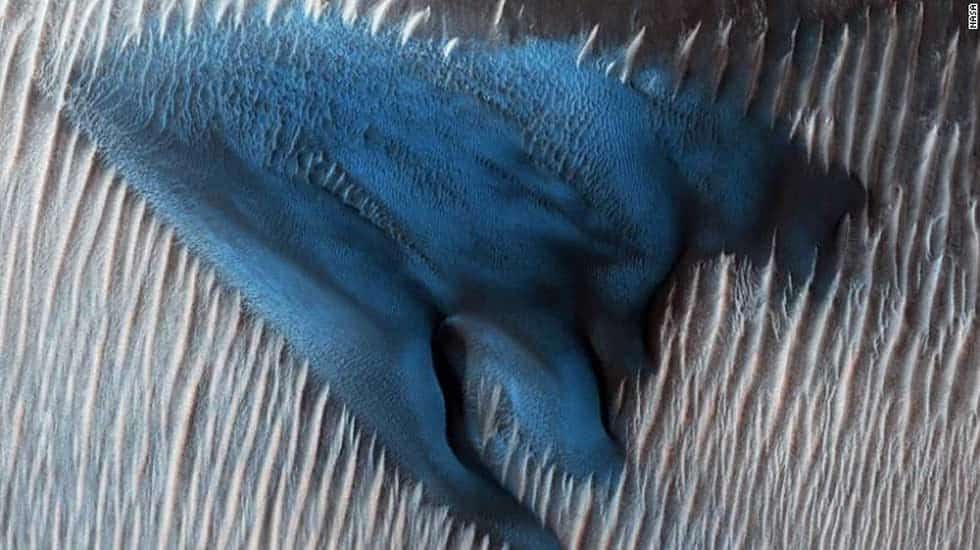
A recent image taken by NASA’s Mars Reconnaissance Orbiter (MRO) features a gorgeous electric blue dune on the Red Planet. That’s surely odd given the planet’s reputation for wearing all-red. Alas, this is an enhanced color image and the dune’s appearance is due to its different composition from the surrounding sand.
The scenery was captured by MRO’s HiRISE (High-Resolution Imaging Science Experiment) camera — the most sophisticated and powerful camera deployed outside Earth. HiRISE takes three different images of the same area, then adjusts them in red, blue, and green using infrared tech. This is done so MRO can observe details on Mars that would have otherwise been obscured by dust. With its sharp ‘eye, MRO can make out objects as small as a coffee table from an altitude ranging from 155 miles to 196 miles (250 to 316 km).
In order to increase contrast, the photos are given min-max stretches. Technically, the dunes we’re seeing are actually gray but appear turquoise blue after such a stretch because most of Mars is red (I explained previously why).
So, sorry to burst everyone’s bubble, but this isn’t some alien oasis.
The dune was found in Lyot Crater where most such dunes are crescent-shaped because they face the wind. NASA has no answer yet as to why the blue dune is more abstract than others, though.






